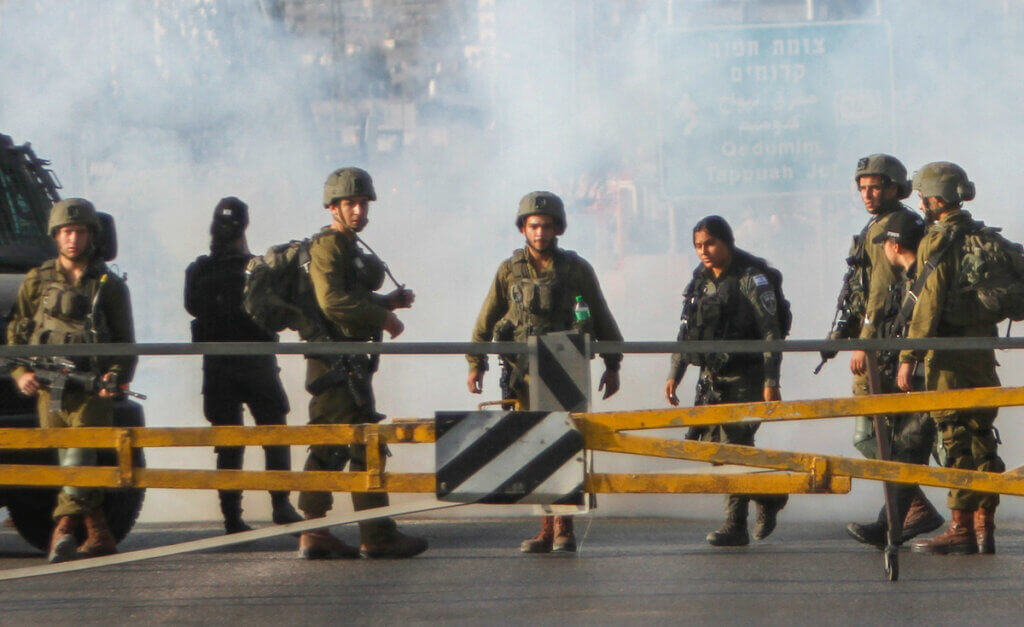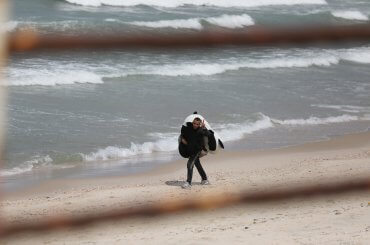The months of August and September bore a heavy feeling. It wasn’t just the assault on Gaza, or the intensification of settler-violence, it is a recognition that the testimonies I hear from Palestinians today echo similar ones I have heard in the past.
In the span of the last 60 days, the Palestinian experience has witnessed a kaleidoscope of images which closely resemble a those from almost two decades ago. This is especially true when I reflect on the rising phenomena of “matloobeen” or the Palestinians on Israel’s wanted list.
It reminds me of the times during the Second Intifada between September 28, 2000 until February 8th, 2005 when Israel used every opportunity to broadcast the names and faces of Palestinians with a bounty reward for tips and information on the whereabouts of “wanted terrorists.”
At that time, similar to today, Israel was also afraid of armed Palestinian youth and incited charges on Palestinian leaders and advocates in addition to its ongoing excessive use of humiliation and degrading practices on Palestinian bodies and spaces. Strip searches were commonplace, children held at gunpoint became an experience that generations shared in common, and curfew was a norm where only bakeries would open.
I remember feeling like the streets were never safe, and with good reason. The sound of soldiers yelling from military jeeps warning “whoever is seen roaming in the street will be killed” was commonplace. I remember those words, it wasn’t “shot” it was “will be killed.” It sounded less like a threat and more like an inevitable promise.
During the Second Intifada almost 3,262 Palestinians, mostly non-combatants, were killed by Israeli armed settlers and military forces. Of the Palestinians killed, 24% were only 18 years old or younger. The death toll continued to rise as injured people slowly succumbed to their wounds.
Today, as I report on developments from Palestine I recognize the striking similarities between those years and now. Perhaps the mechanisms and technologies through which this repression occurs have changed, but the impetus behind it remains the same. The disproportionate use of force also remains, as does the inequality in power dynamics which continues to widen with every year.
I find myself carrying a renewed sense of seriousness because the gravity of the situation commands it. More than this, I am realizing more and more the challenges of reporting in this moment. Somehow there continues to be an artificial divide between past events and current developments when in reality they are intimately connected. Many mainstream reports on the same topics and incidents I’ve been covering fail to convey how every Israeli assault is connected to its precedents – from the settler attacks that prodded the armed resistance, to the economic deterioration which further pushes families, but mostly youth, towards alternative modes of survival.
So far in Palestine this is the pattern. First, there is a strategically designed intensification of Israeli assaults in coordination with the military, intelligence units, settlers, and judicial authorities. This results in increased arrests and imprisonment by the military, additional home demolitions, and increased impunity to Israeli settlers.
What this also means is that Palestinian confrontation and resistance, whether armed or unarmed, escalate and rise. Perhaps it will calm for a moment, but confrontation is inevitable. More than this, there is a visible trend of the growth and development of Palestinian resistance over the last decade. With every small revolt that is quashed, a new mode of operation arises with more support from civil society.
I continue to witness a repetition in the Palestinian experience under Israeli settler-colonialism, but it is in the small details that I find variation and change. These incremental pieces that somehow fall into one another join many more stories in order to create the full picture. In this way, I see our reports at Mondoweiss as pieces of a panorama which show at once the intimate details of the lives behind the numbers, and add up to reveal the broad context of how the story of Palestine is unfolding.


